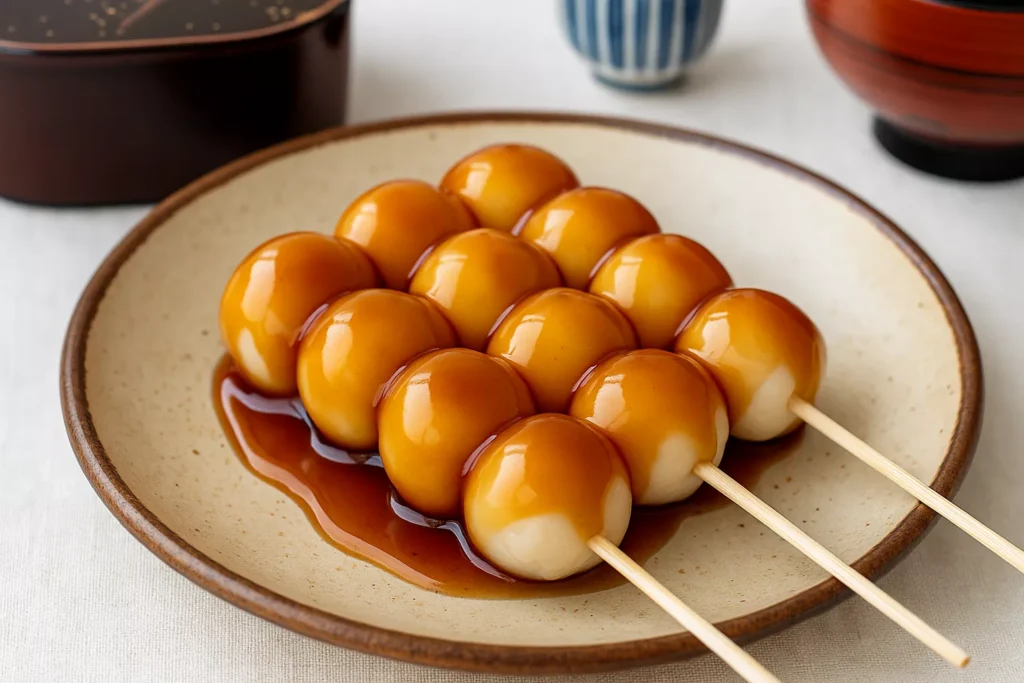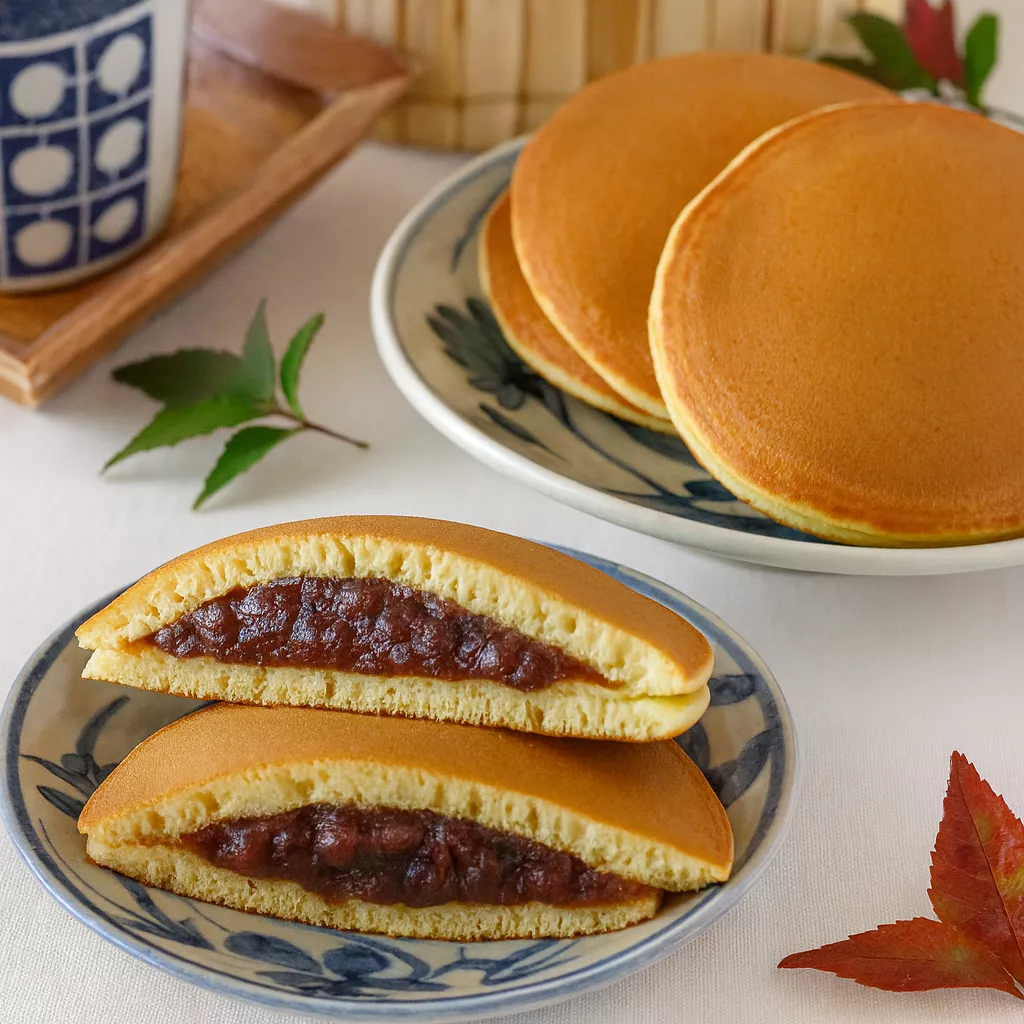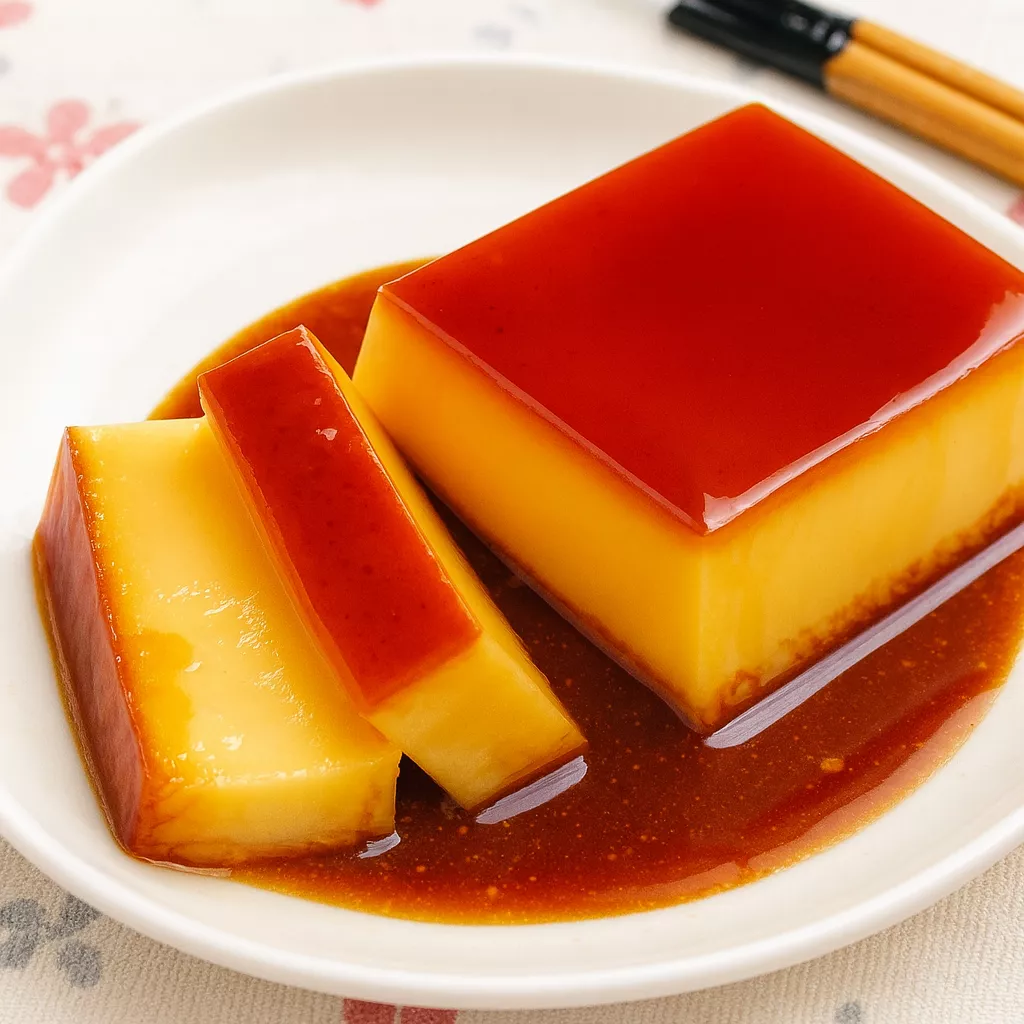Have you ever wondered why Japanese dango tastes so perfectly chewy and sweet-savory at the same time? How do those glossy rice balls on a skewer manage to be both comforting and elegant? The answer lies in a special glaze and a time-honored technique that make Mitarashi Dango (みたらし団子) one of Japan’s most beloved street snacks.
In this article, we’ll explore how to make this traditional Japanese treat at home — soft rice dumplings coated in a sweet soy glaze, grilled or toasted to golden perfection. Even if you’ve never made dango before, this step-by-step guide will walk you through every detail to help you create delicious and authentic Mitarashi Dango from your own kitchen.
What Makes Mitarashi Dango Special
Mitarashi Dango (みたらし団子) is a type of Japanese rice dumpling made from glutinous rice flour, skewered on bamboo sticks, and coated with a sticky, glossy soy-sugar glaze. You’ll often see it at Japanese festivals, tea houses, and traditional sweet shops.
What sets Mitarashi Dango apart is its balance of flavors — the chewy dumplings contrast beautifully with the sweet, salty glaze made of soy sauce, sugar, and mirin. The sauce caramelizes slightly when heated, adding a smoky aroma that makes this snack truly irresistible.
- Preparation time: 30 minutes
- Cooking time: 15 minutes
- Difficulty level: Easy to moderate
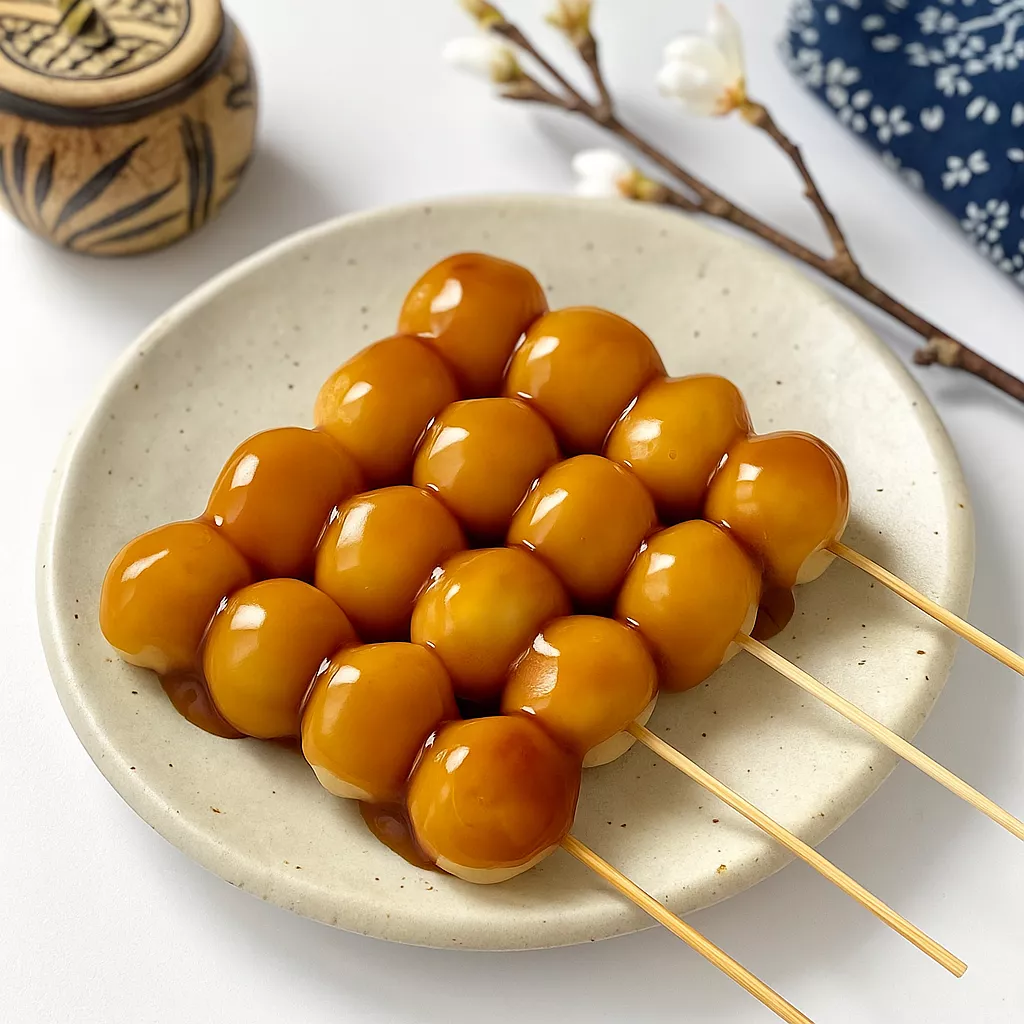
Mitarashi Dango みたらし団子 @JapanDishes
What is Mitarashi Dango みたらし団子?
The name “Mitarashi” is said to come from the Mitarashi Festival held at Kyoto’s Shimogamo Shrine, where the dango were first created as offerings. Today, they remain a symbol of Japanese comfort food — humble, satisfying, and deeply nostalgic.
Essential Ingredients
To make Mitarashi Dango, you’ll need only a few ingredients, most of which can be found in Asian grocery stores or online.
For the Dango (Rice Dumplings)
- Shiratamako (100g) – This is a glutinous rice flour made from short-grain rice. It gives the dango its distinctive chewy texture.
- Substitute: You can use mochiko (sweet rice flour) if shiratamako isn’t available, though the texture will be slightly softer.
- Silken tofu (100g) – Adds moisture and softness to the dough, preventing it from becoming too dense.
- Sugar (1 teaspoon) – Adds a hint of sweetness to the dough and balances the glaze.
- Water (½ tablespoon) – Used only as needed to adjust the texture while kneading.
For the Mitarashi Glaze
- Water (100ml) – The base of the sauce.
- Sugar (3 tablespoons) – Adds sweetness and helps caramelize the glaze.
- Soy sauce (2 tablespoons) – Provides a savory umami flavor that complements the sweetness.
- Mirin (2 tablespoons) – A sweet rice wine that gives a mild shine and aroma.
- Potato starch (1 tablespoon) – Thickens the glaze into a smooth coating.
- Salt (a pinch) – Enhances all the flavors.

Step-by-Step Instructions
Follow these simple steps to create perfect Mitarashi Dango (みたらし団子) at home.
Step 1: Make the Dough
In a large mixing bowl, combine 100g of shiratamako, 1 teaspoon of sugar, and 100g of silken tofu. Mix gently using your hands or a spatula until the dough begins to come together.
Gradually add ½ tablespoon of water, one drop at a time, until the mixture feels smooth and soft — not sticky and not dry. The dough should form into a ball without cracks.
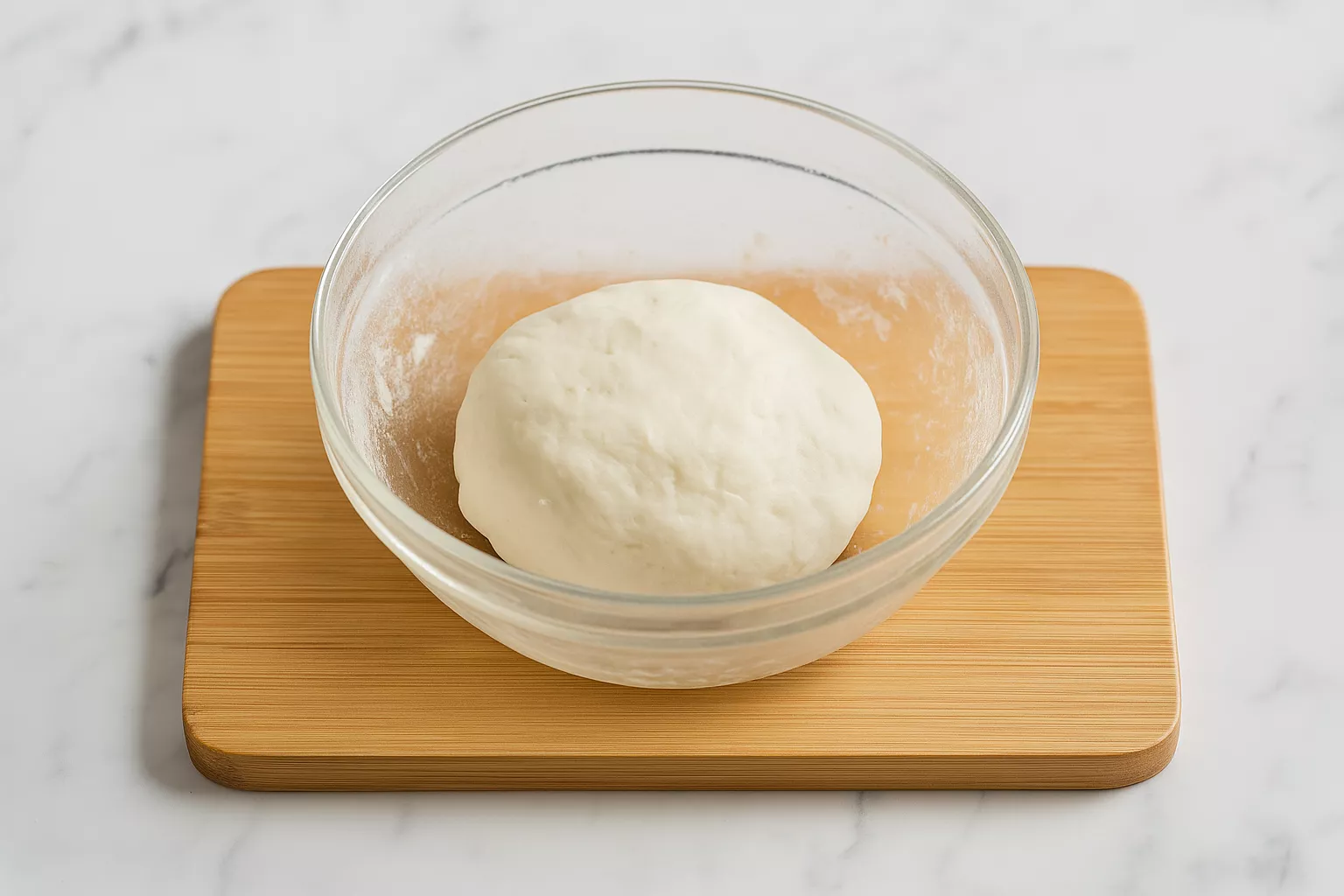
Tip: If the dough cracks when shaped, it’s too dry. Add a bit more water. If it sticks to your hands, sprinkle a little extra shiratamako.
Step 2: Shape the Dango
Divide the dough into 12 to 16 equal pieces. Roll each piece into a small, round ball using the palms of your hands.

Try to keep them uniform in size so they cook evenly.
Step 3: Boil the Dumplings
Bring a pot of water to a gentle boil. Carefully drop the dango balls into the water one by one.
When they float to the surface, continue boiling for about 2 more minutes to ensure they’re cooked through.
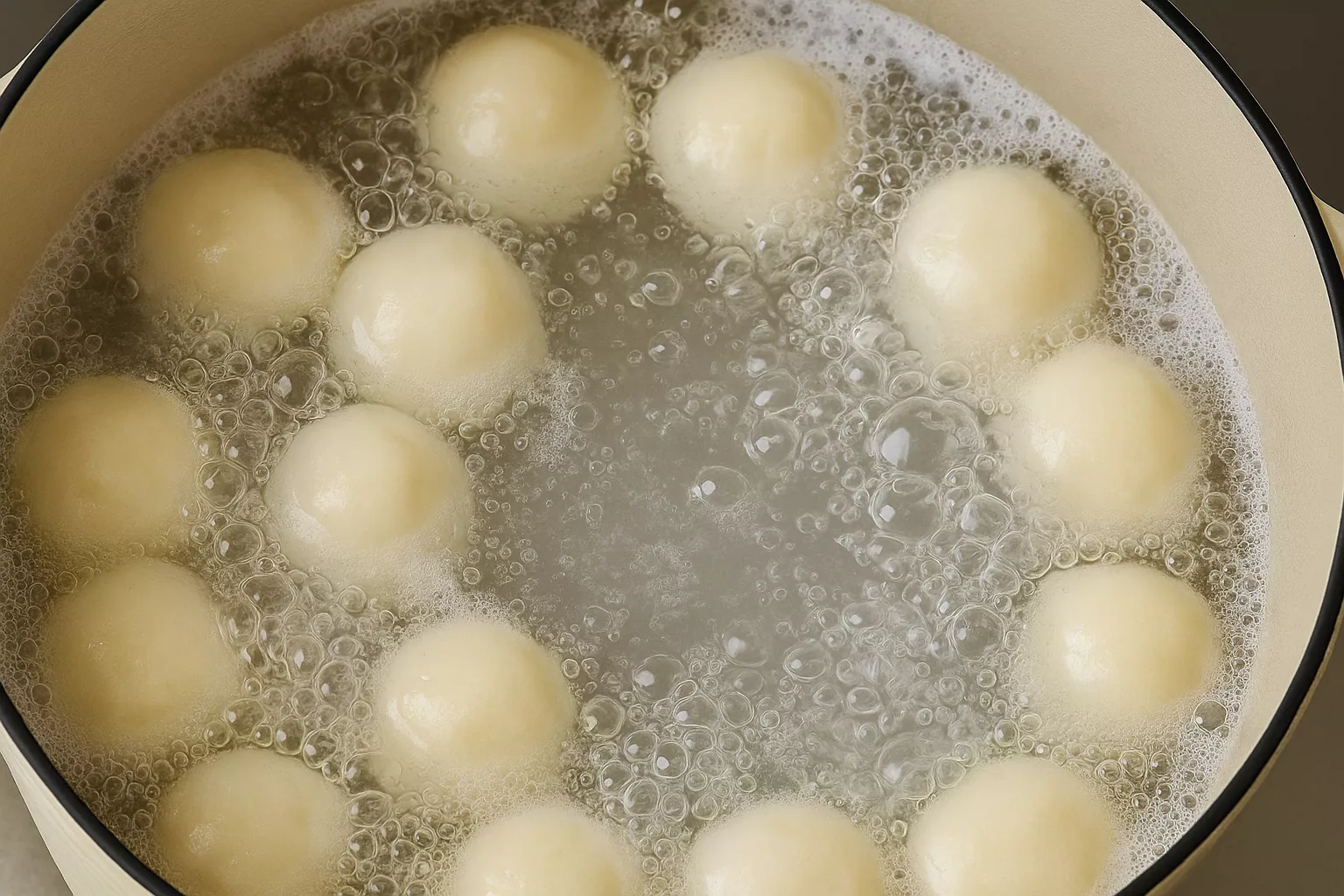
Step 4: Cool in Ice Water
Once the dumplings are done, use a slotted spoon to transfer them immediately into a bowl of ice water. This stops the cooking process and helps them maintain their chewy texture.

Let them cool for a few minutes, then drain well.
Step 5: Skewer the Dango
Thread 3 to 4 dumplings onto each bamboo skewer. Be gentle so the balls don’t break apart.

If you like, lightly toast or grill them over medium heat for a few seconds per side. This adds a smoky flavor and gives them a golden surface that looks beautiful.
Step 6: Make the Mitarashi Glaze
In a small saucepan, mix together 100ml of water, 3 tablespoons of sugar, 2 tablespoons each of soy sauce and mirin, 1 tablespoon of potato starch, and a pinch of salt.
Stir well before turning on the heat to dissolve the starch completely. Then cook over low heat, stirring continuously with a wooden spatula until the mixture thickens and turns glossy.
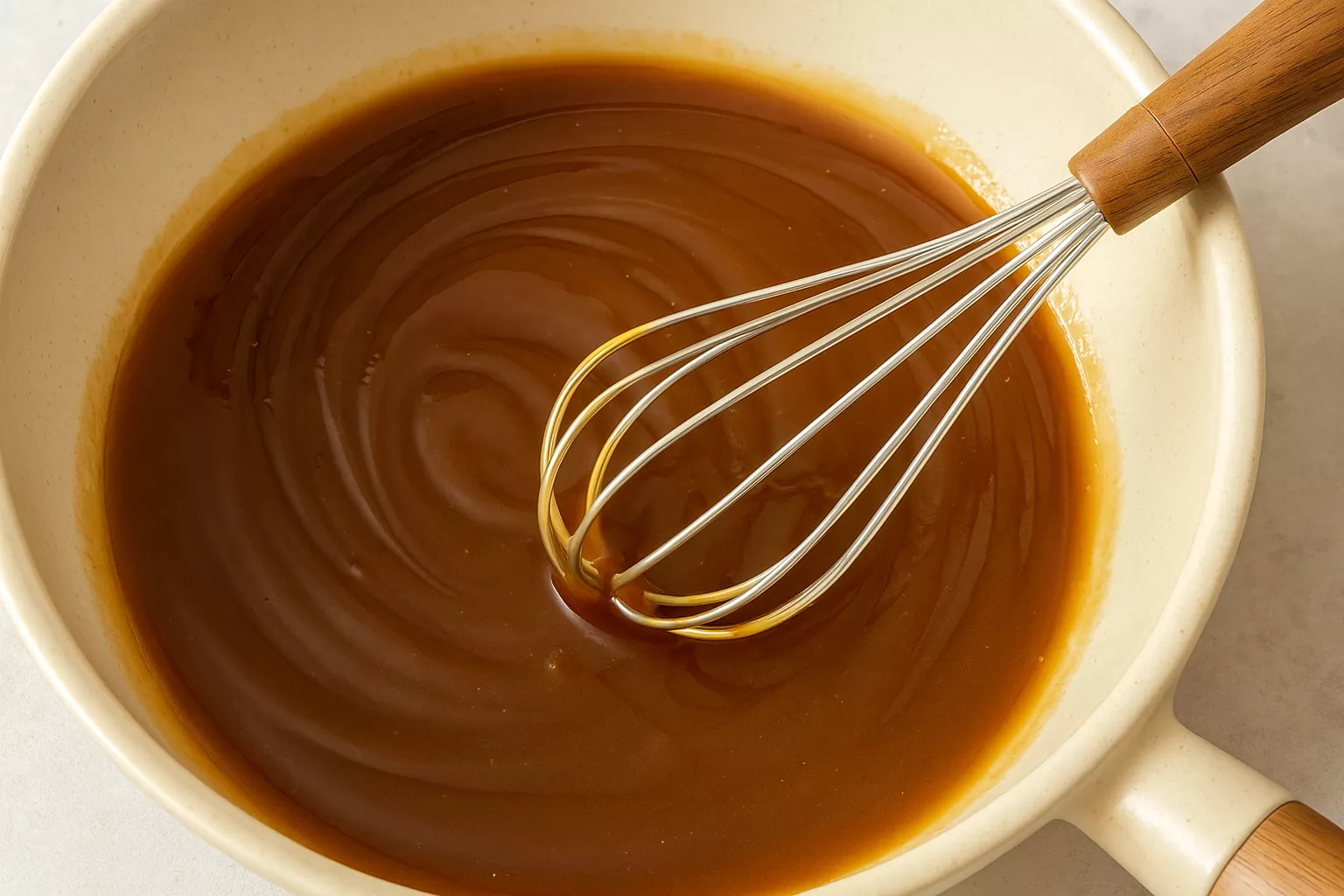
Once thickened, remove from heat and set aside.
Step 7: Coat the Dango
Arrange the skewered dumplings on a plate. Pour the warm Mitarashi glaze generously over each skewer. The sauce will cling to the surface, giving it a shiny caramel color.
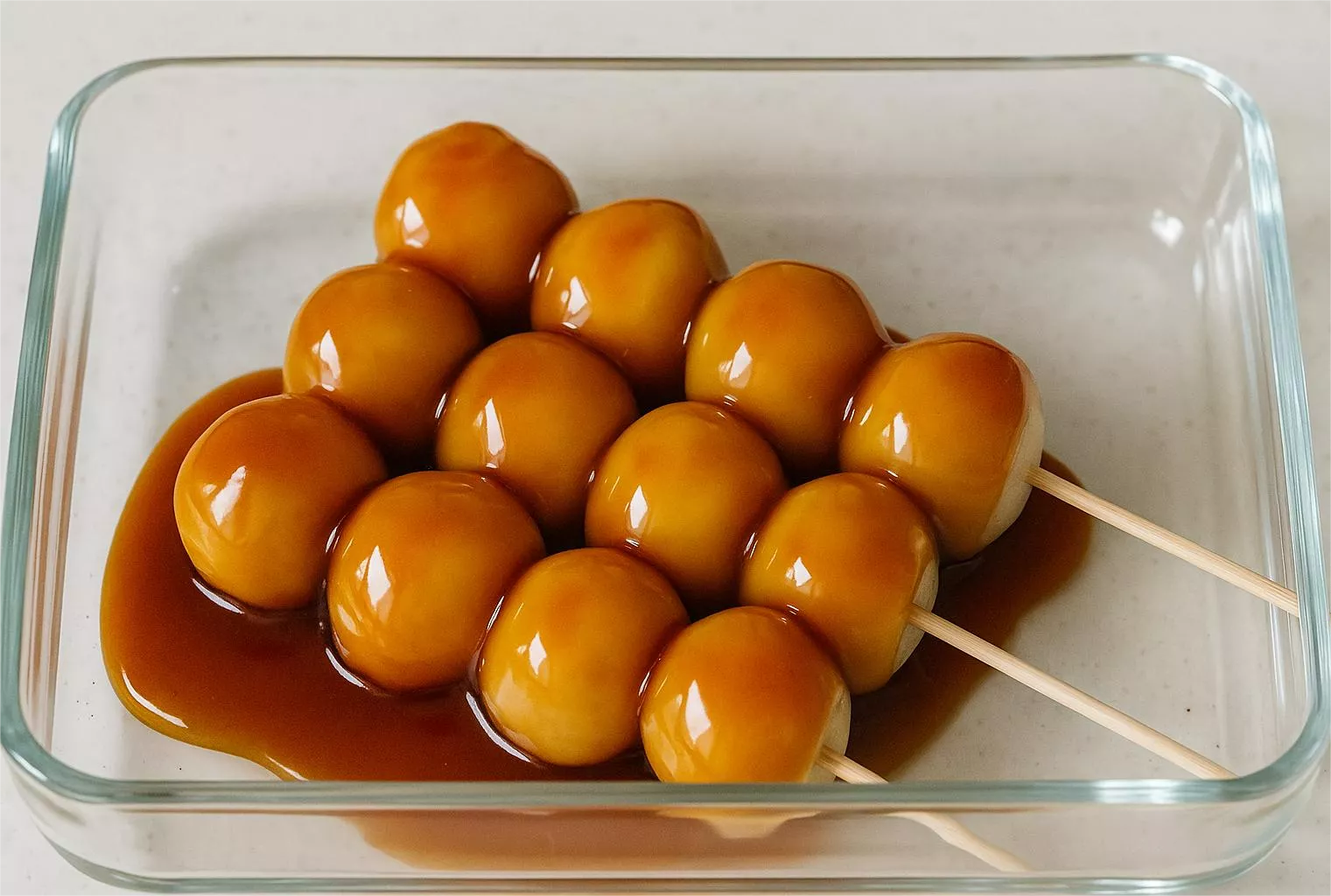
Your homemade Mitarashi Dango みたらし団子 is ready to serve!
Secrets to Success and Expert Tips
- Use Shiratamako: It creates a smoother, chewier texture than regular rice flour.
- Add tofu, not water: The tofu adds creaminess and makes the dango stay soft longer.
- Don’t overcook: Overboiling will make the dango lose their bounce.
- Ice bath: Always cool them quickly to lock in the texture.
- Consistency of glaze: The sauce should coat the back of a spoon — not too runny, not too thick.
Assembly and Presentation
To serve Mitarashi Dango, arrange the skewers neatly on a plate. Traditionally, they are displayed in sets of three to five dumplings per skewer.
Pour or brush the glaze evenly over each dango, letting it drip slightly for an appetizing shine. You can also grill them briefly after glazing to give a caramelized look and smoky flavor.
Hana’s Recipe Tips
- Balance is key: The glaze should have just the right balance of sweet and salty — adjust the soy sauce or sugar slightly to match your taste.
- For a glossy finish: Brush on a thin layer of glaze, let it set, and then brush again.
- Serving idea: Pair your dango with a warm cup of green tea or matcha for a traditional Japanese afternoon treat.
- Presentation trick: Use Japanese ceramic plates or bamboo trays to give an authentic touch.
Storage and Make-Ahead Tips
Mitarashi Dango is best enjoyed fresh, but you can store it if needed.
- At room temperature: Keep for up to 6 hours in a sealed container.
- In the refrigerator: Store for up to 2 days, but note that the texture will become firmer. To soften, steam or microwave for a few seconds before serving.
- Make-ahead: You can make the dumplings a day before, refrigerate them, and prepare the glaze just before serving.
Avoid freezing, as it can change the chewy texture of the rice flour.

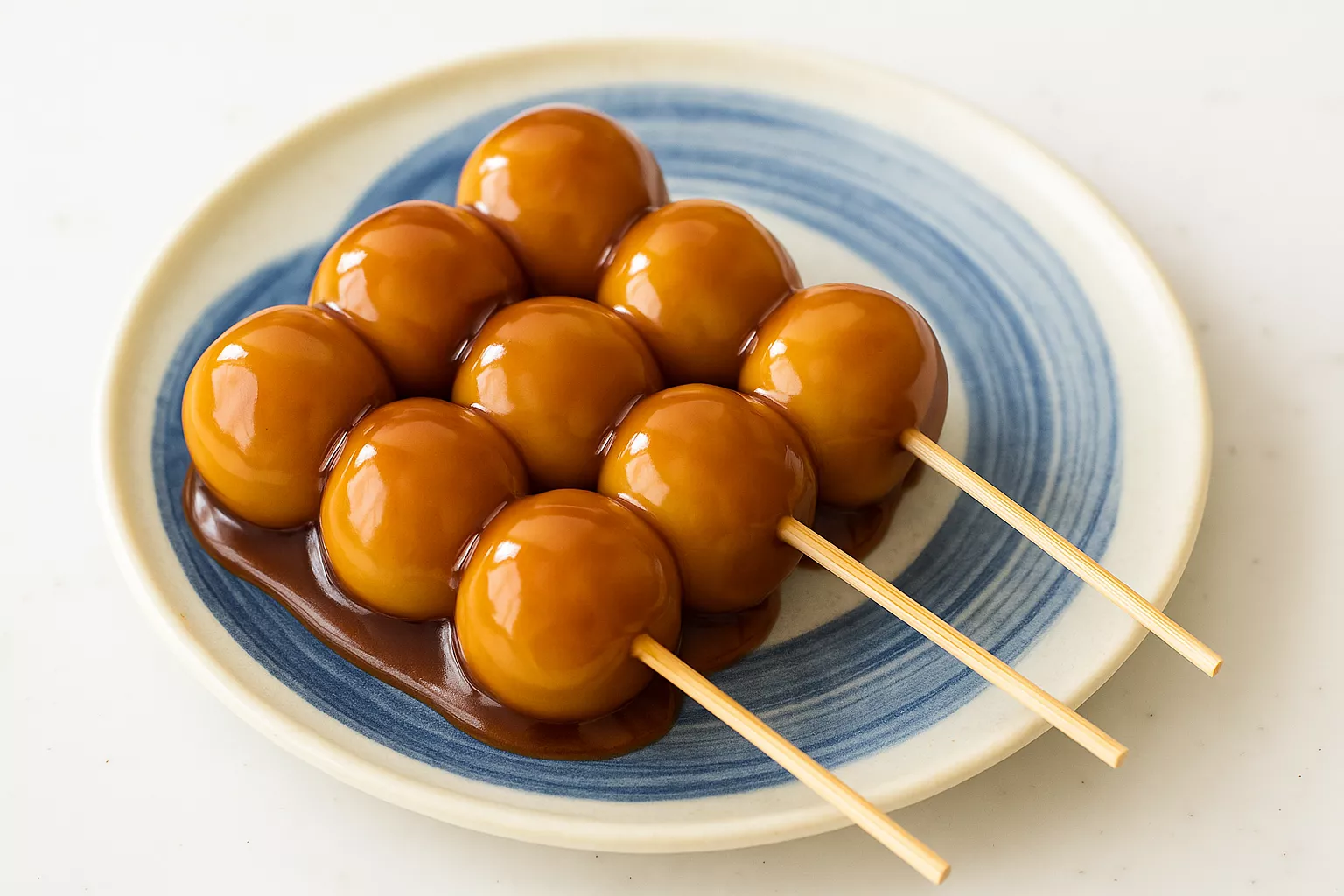
Recipe Variations
Here are a few creative twists to try once you master the classic Mitarashi Dango:
- Yaki Mitarashi Dango: Grill the skewers after coating to add a smoky, caramelized flavor.
- Matcha Dango: Add a teaspoon of matcha powder to the dough for a green tea flavor and color.
- Kinako Dango: Sprinkle roasted soybean powder (kinako) over the glazed dango for a nutty aroma.
- Black Sesame Dango: Mix a bit of ground black sesame into the sauce for a richer, deeper taste.
- Honey Glaze Version: Replace some of the sugar with honey for a milder sweetness.
These variations show how flexible this traditional snack can be, letting you enjoy it in different ways while keeping its authentic spirit.
Health Benefits
Even though Mitarashi Dango is a sweet treat, it has some benefits:
- Gluten-free: Since it’s made from rice flour, it’s naturally free from wheat gluten.
- Light and simple: Contains no heavy fats or oils.
- Protein boost: The tofu adds a small amount of protein and makes it softer.
- Energy source: The rice flour provides quick energy, making it a great pick-me-up snack.
It’s a dessert you can enjoy without too much guilt — especially when paired with green tea.
More Japanese Recipes You Can Try
If you enjoyed making Mitarashi Dango みたらし団子, you’ll love these other traditional Japanese desserts too:
- Japanese Dorayaki (どら焼き) — fluffy pancake sandwiches filled with sweet red bean paste.
- Japanese Custard Pudding (Purin プリン) — smooth, creamy pudding with a caramel touch.
- Fruit Sando (フルーツサンド) — colorful fruit sandwiches with whipped cream.
- Pon de Ring Donut (ポンデリングドーナツ) — chewy, mochi-style donuts inspired by Japan’s favorite treat.
And if you’re planning your next Japan adventure, don’t miss this travel gem:
- Yamadera — The Best View Spots in Japan discover breathtaking mountain temples and scenic views.
Conclusion
Mitarashi Dango (みたらし団子) captures the heart of Japanese comfort food — simple ingredients, mindful preparation, and a perfect blend of textures and flavors. With chewy dumplings and a glossy sweet-savory glaze, this recipe proves that even the simplest dishes can feel special when made with care.
Whether you’re hosting a tea party, celebrating a Japanese festival, or simply craving a taste of Japan, this recipe is sure to impress. Try making it once, and you might find yourself returning to it again and again.
So, gather your ingredients, roll up your sleeves, and bring a bit of Kyoto’s charm right into your kitchen.
FAQs About Mitarashi Dango みたらし団子
1. What does Mitarashi Dango taste like?
It has a chewy texture with a glaze that’s both sweet and savory — a mix of caramelized sugar and soy sauce flavor.
2. Can I make dango without tofu?
Yes, you can use only water to form the dough, but the tofu gives it a smoother texture and helps keep it soft longer.
3. Can I grill dango without boiling it first?
No. Boiling cooks the rice flour fully and sets the texture. Grilling without boiling will make the inside raw and hard.
4. How do I reheat Mitarashi Dango?
Microwave for 10–15 seconds or briefly steam them. Avoid overheating, as this can make them dry.
5. What can I serve with Mitarashi Dango?
They pair beautifully with green tea, matcha lattes, or other wagashi (Japanese sweets) such as dorayaki or anmitsu.
6. Can I use mochiko instead of shiratamako?
Yes, but the texture will be softer and less bouncy. Shiratamako gives a more traditional chewy feel.
7. Is Mitarashi Dango vegan?
Yes, this recipe is vegan since it uses tofu and plant-based ingredients. Just check your soy sauce and mirin labels to ensure they contain no additives.
Final Thought
Making Mitarashi Dango みたらし団子 at home is a rewarding way to connect with Japanese tradition. With just rice flour, tofu, and a few pantry staples, you can recreate a sweet treat that’s been loved for generations.
The next time you crave something simple yet special, try making this beautiful snack — warm, shiny, and perfectly chewy, just like the ones served at Japanese tea houses.
Mitarashi Dango みたらし団子
Course: DessertCuisine: JapaneseDifficulty: Easy4
servings25
minutes15
minutes180
kcalLearn how to make Mitarashi Dango みたらし団子, chewy rice dumplings coated in a glossy sweet soy glaze. This classic Japanese treat is simple, quick, and perfect for any occasion.
Ingredients
- For the Dango (Rice Dumplings):
100g Shiratamako (glutinous rice flour)
1 teaspoon sugar
100g silken tofu
½ tablespoon water (adjust as needed)
- For the Sweet Soy Glaze:
100ml water
3 tablespoons sugar
2 tablespoons soy sauce
2 tablespoons mirin
1 tablespoon potato starch
A pinch of salt
Directions
- Prepare the Dough
In a bowl, combine shiratamako, sugar, and silken tofu. Mix until the dough starts to form. Gradually add water a few drops at a time until the texture becomes smooth and no longer cracks when shaped. - Shape the Dango
Divide the dough into 12–16 equal pieces. Roll each into a small round ball between your palms. - Boil the Dumplings
Bring water to a boil in a pot. Drop in the dango gently. Once they float to the surface, continue boiling for about 2 minutes to cook through. - Cool and Drain
Transfer the cooked dango to a bowl of ice water to stop cooking and firm up their texture. Let cool, then drain well. - Skewer the Dango
Thread 3–4 dumplings onto bamboo skewers. Optionally, grill or toast them lightly for a golden finish and smoky flavor. - Make the Glaze
In a small saucepan, whisk together water, sugar, soy sauce, mirin, potato starch, and salt. Cook over low heat while stirring until the sauce thickens into a glossy glaze. - Coat and Serve
Place the dango skewers on a plate and pour or brush the warm glaze evenly over them. Serve immediately for the best flavor and texture.
Notes
- ✪ For a traditional flavor, lightly grill the skewers before adding the glaze.
✪ The dough should feel soft but not sticky — adjust with small amounts of water or rice flour.
✪ Best enjoyed fresh, but you can refrigerate the dango for up to two days and reheat gently before serving.
✪ Perfectly pairs with a cup of matcha or green tea.
